With the number of front derailleur standards multiplying in recent years, the choice of your MTB front derailleur has become relatively complicated. Here's how to make the right choice for your MOUNTAIN BIKE.
Standards
- Number of gears: 9, 10, 11 or 12
- Number of chainrings: 1, 2 or 3
- Type of mounting: clamp or direct mount
- Type of pull: top, bottom, front
Front derailleur types
Recall Unlike MTB rear derailleurSHIMANO and SRAM operate under the same standard for front derailleurs, so you can combine components from both brands.
Since all drivetrain components are designed to operate under the same standard of gears and chainringsso it's important to respect them. For example, a front derailleur advertised as "2x10V" will only be compatible with a 2 chainring, 10-speed transmission.
Of course, if you've opted for a single-plate assembly, you won't need a front derailleur.
As for the type of mountingthe most common is a clamp, with a diameter of 28.6 mm, 31.8 mm or 34.9 mm. The collar is positioned above the derailleur for a "high collar". A or below it for a "low collar". B.

Another type is called "Direct Mount". Cin English. This requires a frame specifically designed for mounting this type of front derailleur. These frames are fitted with a plate to accommodate the derailleur.

It's important to point out that there are also variations: top, bottom and mid direct mounting.
In the case of a "direct mount high" (or "type-D" at Shimano), it's quite simple: there's only one easily identifiable standard, since the derailleur is fixed to the bike by a screw positioned above the derailleur.
There are three versions of the "direct mount low", which can be identified by the fact that the derailleur is fixed by two screws positioned below the derailleur:
 |
 |

|
|
S1 type The distance a between the two screws is 42.7 mm |
Type S2 The distance b between the two screws is 22.7 mm with a flat support against the bike. |
Type S3 or Type-E The distance c1 between the two screws is 22.7 mm with an offset of c2 of 5 mm between the two fixing points. |
Mid direct mount, also known as centered direct mount, is a recent addition to the SRAM product range.
Finally, there's the now rare "BB-mount". In this case, the derailleur is fitted with a plate allowing it to be placed between the bottom bracket and the frame. This system was used for frames with geometries that were too unusual for a derailleur to be mounted on the seat tube.
The arrival of the cable on the derailleur, called the pullcan be done in different ways:
| Down Swing front derailleur (high collar) Top Pull A |
Top Swing front derailleur (low clamp) Top Pull A |
 |
 |
| Down Swing front derailleur (high collar) Down Pull B |
Top Swing front derailleur (low clamp) Par dessous pour un tirage bas / Down Pull B |
 |
 |
| Or from the front for a front pull c, in English Side Swing. |
|

|
Reminder Some derailleurs accept both high and low pull.
Which front derailleur should I choose?
Your choice will depend above all on the standard imposed by your frame. bike. Just make sure you choose a derailleur that is compatible with your frame and matches your mountain bike transmission.
For a clamp mount, the choice between high and low depends on the shape of your frame. On a full-suspension frame, for example, it's rarely possible to mount a derailleur with a high collar, as it would interfere with the suspension system. If your frame allows both standards, the low-collar derailleur is generally stiffer and therefore more efficient for shifting gears.
Découvrez tous nos conseils & Tutoriels
MTB - Front Derailleurs
-
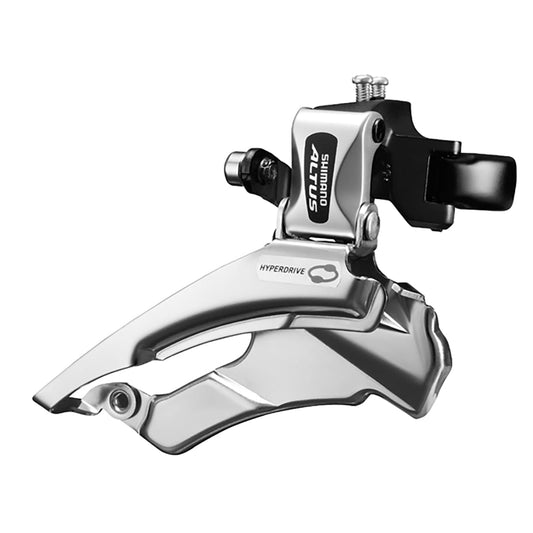
SHIMANO ALTUS FD-M313 3x7/ front derailleur8 Speed Top Clamp
Regular price 15,99 €Regular priceUnit price per -
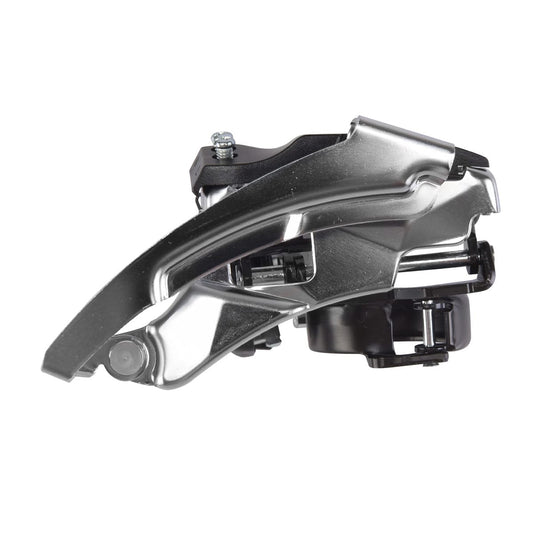
SHIMANO ALTUS FD-M310 3x7/ front derailleur8 Speed Bottom Clamp
Regular price 15,99 €Regular priceUnit price per -
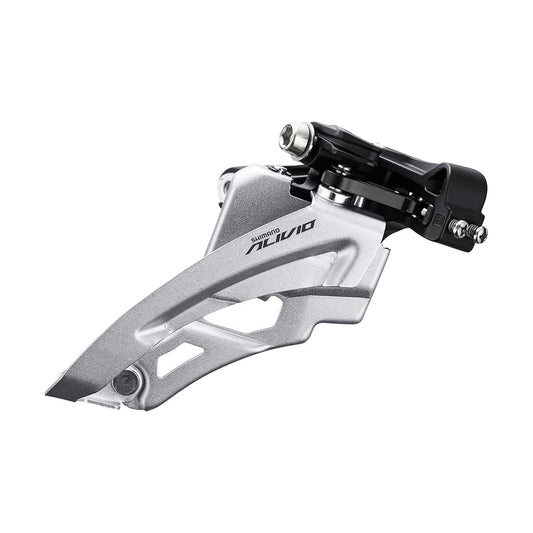
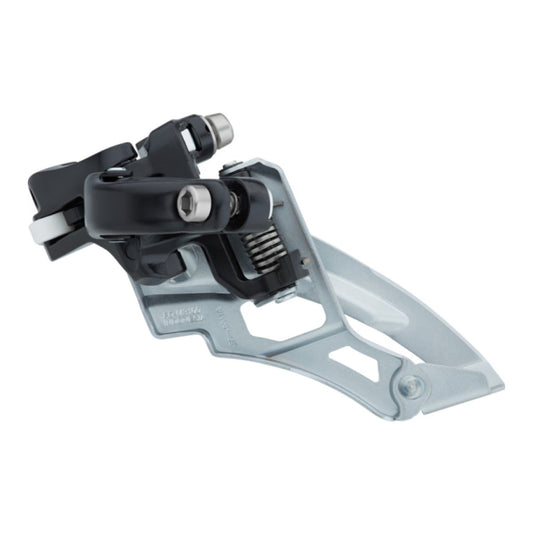
SHIMANO ALIVIO FD-M3100-M 3x9V Top Collar Front Derailleur
Regular price 27,99 €Regular priceUnit price per -
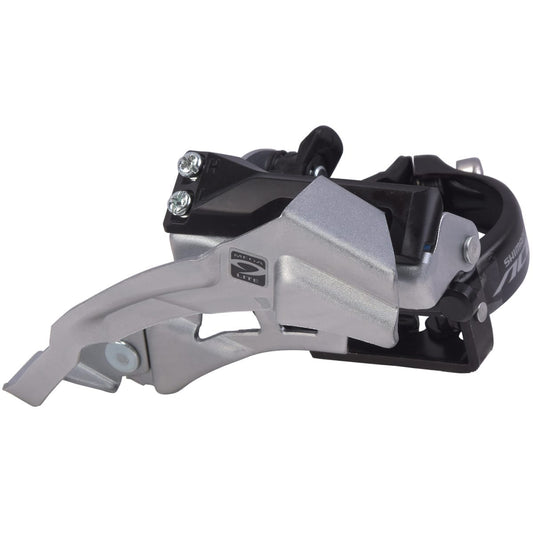
SHIMANO ACERA FD-M3000 3x9V Front Derailleur Low Clamp
Regular price 24,99 €Regular priceUnit price per -
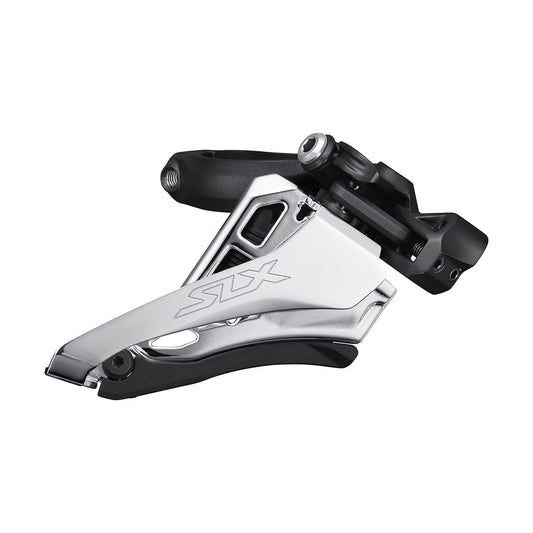
SHIMANO SLX SIDE SWING FD-M7100-M 2x12V front derailleur
Regular price 26,99 €Regular priceUnit price per -
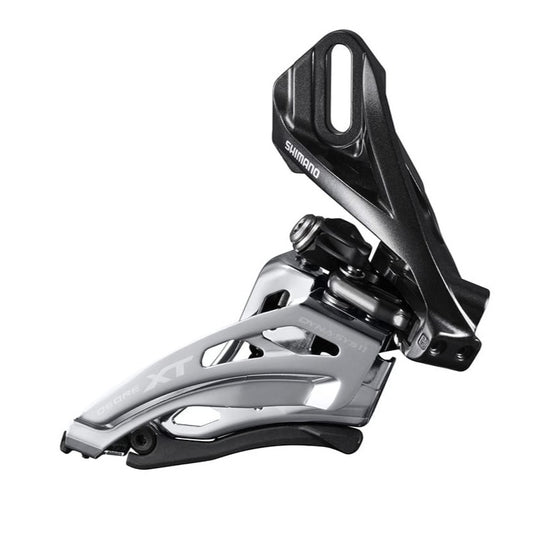
SHIMANO DEORE XT FD-M8020 2x11V front derailleur Direct Mount
Regular price 49,99 €Regular priceUnit price per -
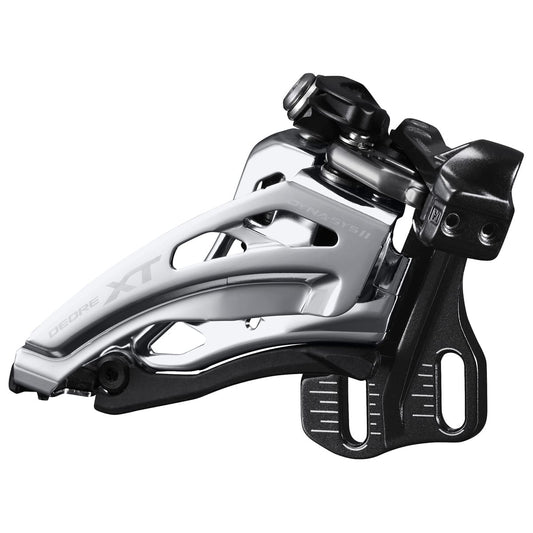
SHIMANO DEORE XT FD-M8020 2x11V E-Type front derailleur
Regular price 49,99 €Regular priceUnit price per -
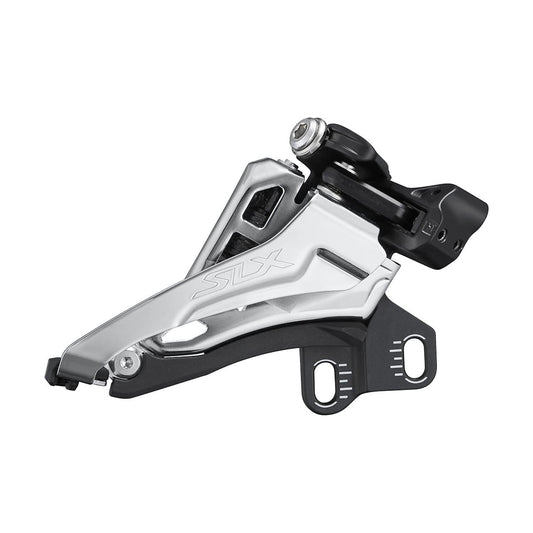
SHIMANO SLX SIDE SWING FD-M7100-E 2x12V E-Type front derailleur
Regular price 29,99 €Regular priceUnit price per









